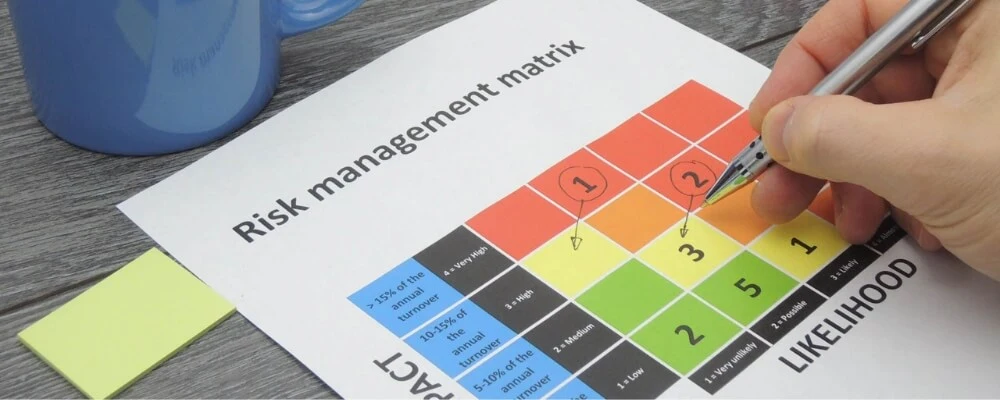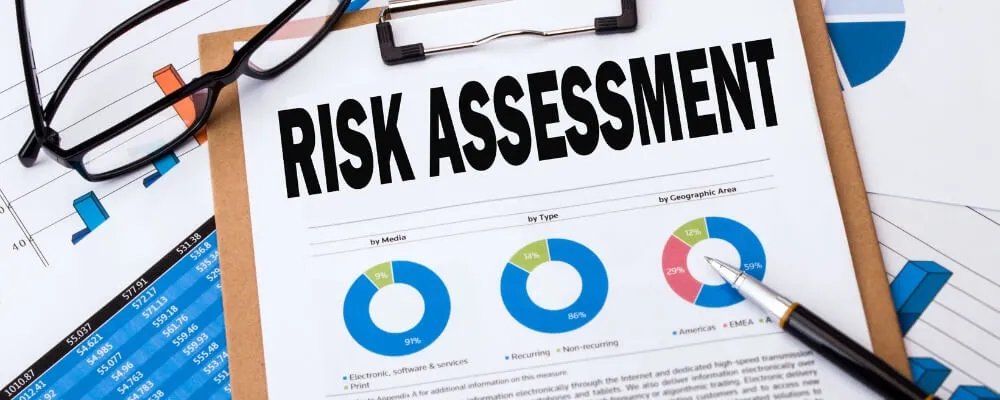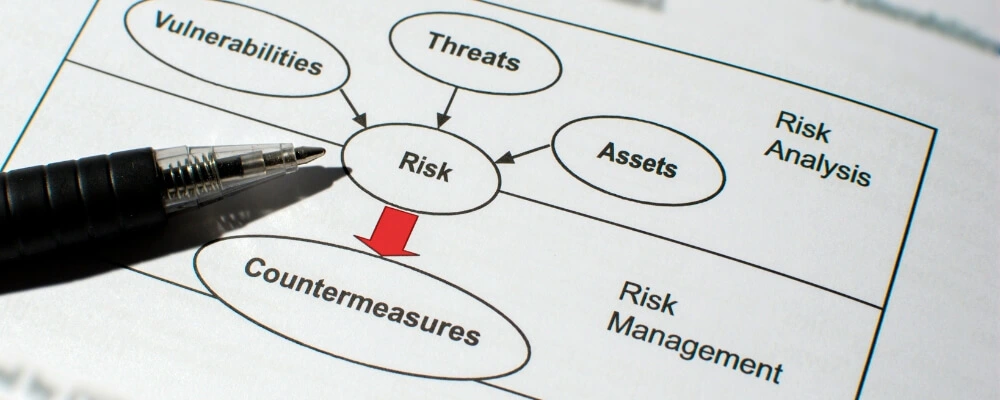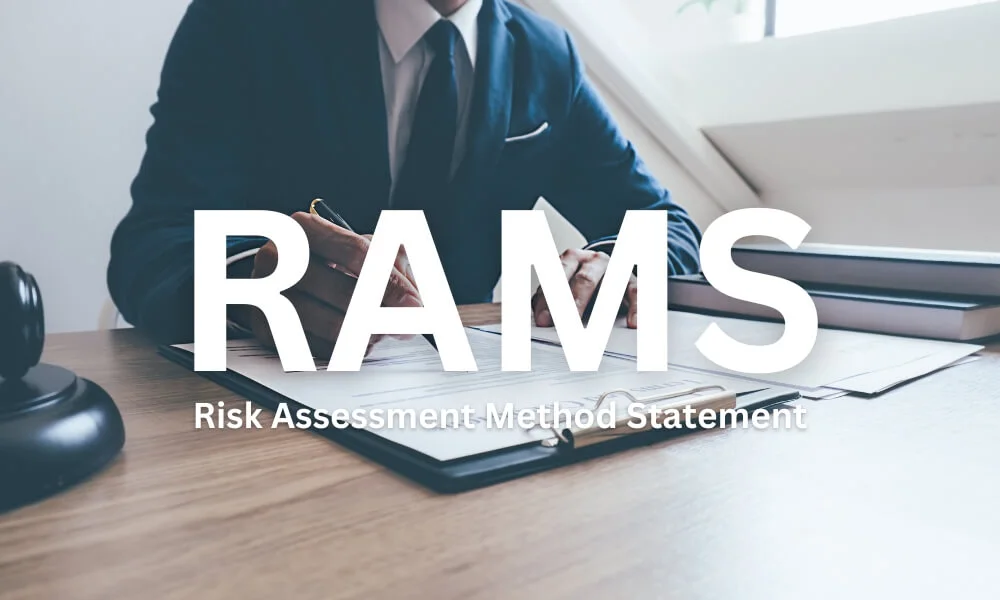In the dynamic and often high-risk landscape of the construction sector, safeguarding the well-being of personnel and ensuring the seamless progression of projects is paramount. The potent mechanism of RAMS – Risk Assessment Method Statements is at the heart of this protective shield. This vital tool not only delineates the various hazards that might be encountered but also stipulates the meticulous methods to mitigate these risks, thereby fostering a secure and productive work environment.
As we delve deeper, this blog aims to unfold the multifaceted aspects of RAMS in the construction sector, highlighting its vital components and showcasing the tangible and intangible benefits that it carries along. Whether you are a seasoned industry veteran or a newcomer keen on ingraining safety in operations, understanding RAMS can be your cornerstone in building a fortress of safety and efficiency in construction projects.
What is RAMS in Construction?
In the construction industry, where activities are inherently fraught with risks, RAMS (Risk Assessment Method Statements) is essential to ensure safety and compliance with regulations.
RAMS in Construction Defined
RAMS stands for Risk Assessment Method Statement. It is a comprehensive document used in the construction sector to ensure that high-risk activities are conducted safely and systematically.
1. Risk Assessment
This is the initial part of RAMS. All potential hazards associated with a specific task or process in a construction project are identified here. After identification, an assessment is conducted to determine the severity and likelihood of each hazard. This assessment then informs what control measures should be taken to eliminate or reduce the risks to an acceptable level. The main goal is to ensure the safety of everyone present on the construction site, from workers to visitors.
2. Method Statement
Building on the risk assessment, the method statement is a detailed step-by-step guide on how a particular task or activity should be completed safely in the construction environment. It describes the method of work to be employed, the necessary tools and equipment, and any safety precautions to be observed. Detailing the process, it ensures that there’s consistency in how tasks are performed, reducing the chances of errors or oversights that might lead to accidents or other issues.

Why RAMS are Crucial in Construction
The construction sector is known for its complex tasks, heavy machinery, and ever-changing environments. As such, the risks are both varied and abundant. RAMS, therefore, acts as a preemptive measure, ensuring that before any task is undertaken, all potential risks are considered and safety protocols are established.
Furthermore, in many regions globally, having a documented RAMS is a legal requirement for construction projects, especially when they involve high-risk activities. This is not just a bureaucratic mandate but a testimony to the industry’s commitment to safety. A well-prepared RAMS reflects a construction firm’s dedication to safeguarding its personnel and upholding the highest standards of operation.
RAMS in construction is not just a document; it’s a culture. It embodies the industry’s emphasis on proactive safety measures, ensuring that every project, regardless of scale or complexity, is rooted in practices prioritizing human well-being and operational efficiency.

10 Benefits of Using Risk Assessment Method Statements (RAMS)
Risk Assessment Method Statements (RAMS) are crucial documents in various industries, especially in construction, manufacturing, and other high-risk work environments. They help organizations identify potential hazards, assess risks, and implement control measures to ensure the safety of workers, the public, and the environment. Here are 10 benefits of using RAMS:
1. Enhanced Workplace Safety
Using Risk Assessment Method Statements (RAMS) significantly upgrades safety in the workplace. It is a meticulous strategy that involves pinpointing potential hazards and delineating secure methods to handle various tasks. This way, it promotes an environment where work is conducted with extreme caution and precision, drastically reducing the likelihood of mishaps and injuries.
Moreover, it fosters a culture that places the welfare of employees at the forefront, which in turn nurtures a positive work atmosphere where individuals feel valued and protected.
2. Protection from Consequences
Adhering to RAMS not only facilitates safety but also serves as a shield, protecting your business from the adverse repercussions of negligence. When proper safety protocols are in place, the business stands less chance of facing legal disputes and liabilities.
This, in essence, means that RAMS works as a defensive mechanism that guards against various potential detrimental outcomes, including financial strains and reputational damages that can result from workplace accidents.
3. Informed Decision Making
Implementing RAMS facilitates transparent and coherent guidelines on secure practices. This clarity acts as a beacon, guiding employees and managers in making safe and well-informed decisions during their tasks.
It becomes a cornerstone during unexpected challenges, providing a roadmap that helps navigate complex situations without compromising safety standards. Consequently, it fosters a work environment that encourages critical thinking and informed decision-making, which is central to a successful and secure workplace.
4. Clear Communication
The incidence of workplace accidents can often be traced back to miscommunications or misunderstandings. RAMS obliterates these issues by laying down processes step-by-step, leaving no room for ambiguities.
It ensures a harmonized understanding of how various tasks should be performed, effectively bridging gaps in communication and fostering a collaborative work environment. This heightened clarity in communication is pivotal in avoiding accidents, thus cultivating a safer workspace.
5. Reduction in Workplace Absences
The adoption of RAMS substantially contributes to decreased workplace absences, often resulting from work-related illnesses and injuries. Endorsing safe practices and mitigating the risk of accidents ensures smoother operations, eliminating the disruptions that come with unexpected leaves.
Additionally, it alleviates the financial burden that comes with sick leaves, thus helping maintain a healthy bottom line while promoting the overall well-being of employees.

6. Financial Savings
The financial benefits of implementing RAMS are considerable. A reduction in workplace accidents translates to fewer compensation claims and a decrease in medical expenses. Moreover, by lowering the rate of employee absences, businesses can avoid the costs associated with hiring temporary staff or the increased pressure on existing employees to cover for absentees. This financial prudence brought by RAMS can, in the long run, contribute to the sustainable growth of the business.
7. Legal Compliance
In many regions, ensuring workplace safety is not just an ethical obligation but a legal one. Utilizing RAMS adeptly meets these legal requirements, shielding the business from potential fines and penalties resulting from non-compliance.
Beyond just avoiding penalties, it showcases the business as a responsible entity that values the safety and well-being of its employees, which can be a strong point of attraction for potential employees and stakeholders.
8. Enhanced Business Reputation
A steadfast commitment to safety, as demonstrated through the diligent use of RAMS, considerably enhances a business’s reputation. In a society that increasingly values corporate responsibility, stakeholders, clients, and employees are more likely to gravitate toward organizations prioritizing health and safety.
This commitment fosters trust and can be a unique selling point, setting the business apart in a competitive market.
9. Consistency in Operations
RAMS is a cornerstone for maintaining uniformity in how tasks are approached and executed, irrespective of the individuals performing them. This consistency not only cultivates a safer work environment but also guarantees predictable outcomes and a uniform quality of work.
It acts as a template that standardizes operations, ensuring that the quality of work is not compromised, thereby enhancing productivity and fostering a culture of excellence within the organization.
10. Empowerment and Accountability
By delineating clear guidelines on roles and responsibilities, RAMS empowers employees, giving them a clear understanding of what is expected regarding safety. This clarity breeds a greater sense of accountability, with everyone fully aware of their role in maintaining a safe work environment.
It cultivates a collective responsibility towards safety, fostering a collaborative spirit where each individual is accountable and invested in the overall safety of the workplace. This enhances safety and promotes mutual respect and cooperation among employees.

Tips for Creating an Effective Risk Assessment Method Statement (RAMS)
Creating an effective Risk Assessment Method Statement (RAMS) is paramount for ensuring workplace safety and compliance. To craft an effective RAMS, consider the following tips:
- Understand the Task: Before anything else, understand the task or project. This includes its scope, involved parties, tools and equipment, and expected outcomes. A clear understanding sets the foundation for the subsequent steps.
- Identify All Potential Hazards: Make sure to thoroughly inspect the work environment and list all potential hazards, regardless of their severity. Remember, what might seem minor could escalate under certain conditions.
- Involve Relevant Personnel: The insights from individuals directly involved in the task can be invaluable. Engage them in discussions, as they might be aware of risks that aren’t immediately obvious. Their hands-on experience can greatly enrich the RAMS.
- Determine Risks: For each identified hazard, assess the associated risk by considering the likelihood of it occurring and the potential severity if it does.
- Outline Control Measures: Detail the preventive and control measures for each risk. These could range from wearing protective equipment to modifying a certain process. The aim is to minimize or entirely eliminate the risk.
- Be Clear and Concise: Avoid jargon and make sure the RAMS is written in plain, straightforward language. Everyone, from managers to frontline workers, should be able to understand it without ambiguity.
- Sequence the Tasks Properly: Clearly outline the order in which tasks should be performed. Some tasks may depend on others, or a certain sequence may be safer.
- Review and Revise: Once the RAMS is drafted, review it with a team, including safety experts. Incorporate feedback and always be open to revisions. Over time, as the nature of tasks or environments change, the RAMS should be updated accordingly.
- Train and Inform: After finalizing the RAMS, ensure everyone involved is properly trained. They should not only be aware of the content but should also comprehend its importance and implications.
- Document Everything: Ensure that every step, from hazard identification to the control measures, is well-documented. This evidence of compliance can be a helpful reference for future tasks or projects.
- Regular Monitoring: Once the RAMS is in place and the task has commenced, consistently monitor its implementation. This will help identify areas where the RAMS may not be fully effective or employees might not adhere to it.
- Feedback Loop: Establish a system where workers can provide feedback on the RAMS. This can be invaluable for continuous improvement. Real-world experiences and challenges the team faces can offer insights into refining the RAMS further.
- Stay Updated: Safety standards and best practices are always evolving. Stay updated with the latest guidelines, technologies, and methods in risk assessment. This ensures that your RAMS always aligns with the best available standards.
- Seek Expertise When Needed: If you’re uncertain about certain aspects, don’t hesitate to consult with safety experts or professionals. Their expertise can provide additional layers of assurance and effectiveness to your RAMS.
By adhering to these tips, one can ensure that the RAMS is not just a document but a living guide that actively contributes to the safety and well-being of everyone involved.

What Should Be Included In A RAMS?
A RAMS (Risk Assessment Method Statement) is a comprehensive document designed to ensure tasks and projects are carried out safely. At its core, a RAMS should detail the potential hazards of a task, who could be harmed, and the steps necessary to mitigate these risks. The document typically starts with a title and an introduction outlining the task or project being addressed. This is followed by a clear scope of work, providing a concise outline of the activities covered by the RAMS.
Integral to the RAMS is the risk assessment, which involves identifying potential hazards associated with the task. This section also determines the persons at risk, evaluates the severity and likelihood of each hazard, and culminates in a risk rating. The method statement then provides a step-by-step guide on executing the task safely, highlighting the sequence of work and necessary control measures.
Resources are another vital component, listing all required tools, equipment, materials, and essential personal protective equipment (PPE). Safety procedures, such as emergency escape routes, first-aid provisions, and incident reporting mechanisms, are detailed. The document should clearly define roles and responsibilities, ensuring everyone knows their duty in the safety process.
Furthermore, the RAMS should specify any training or qualifications essential for safely completing the task. As tasks evolve or new risks are identified, the RAMS may need updates; hence, a review and revision log is indispensable. Lastly, the document should include a sign-off section for relevant parties, ensuring they have read, understood, and agreed to abide by the procedures detailed in the RAMS.

Who Can Approve RAMS?
The approval of RAMS (Risk Assessment Method Statement) typically lies with competent individuals with sufficient knowledge, experience, and training related to the specific task, project, or industry. The designation of these individuals can vary across organizations and sectors, but generally, they should possess the following qualifications or be in the following roles:
- Health and Safety Professionals: Those with formal health and safety qualifications and experience in risk assessments and method statements are generally well-placed to approve RAMS.
- Project Managers or Site Managers: In construction or industrial projects, project or site managers often have the responsibility to approve RAMS since they are well-acquainted with the operations, risks, and safety protocols specific to the project.
- Technical or Operational Experts: For specialized tasks, experts with technical knowledge of the process or equipment involved may be required to approve the RAMS. This ensures the RAMS meets safety standards and aligns with operational best practices.
- Senior Management: In some organizations, especially where the risks are significant or have high potential consequences, RAMS might need endorsement from senior management or directors to ensure they are aware of and committed to managing those risks.
- Client or Principal Contractor: In contract work, especially in the construction industry, the client or principal contractor might have the authority or a contractual obligation to approve the RAMS to ensure that subcontractors or other parties adhere to required safety standards.
- Regulatory or External Bodies: In certain high-risk industries or scenarios, an external regulatory body or third-party specialist might need to review and approve the RAMS to ensure compliance with specific regulations or industry standards.
It’s essential to ensure that whoever is given the authority to approve RAMS has the necessary competence, understands the nature of the work, is familiar with the hazards and risks associated with it, and is trained in the development and review of RAMS. This ensures that the RAMS is both practical and effective in managing risks.

What Are RAMS Documents in Health and Safety?
RAMS documents stand for “Risk Assessment Method Statements.” In health and safety, these documents are pivotal in identifying, evaluating, and detailing how specific tasks or activities will be safely executed within a work environment, particularly in industries prone to high-risk activities such as construction.
RAMS combines the elements of risk assessment, which catalog potential hazards and assess the level of risk they pose, with method statements, which provide a step-by-step guide on how tasks should be carried out safely, detailing the control measures and safety precautions to be employed. These documents help ensure safety protocols are clearly communicated and followed, reducing workplace incident risk.
Conclusion
In the dynamic construction world, where the interplay of manpower, machinery, and materials can lead to numerous challenges and risks, RAMS stands out as an essential guiding light. It provides a structured approach, outlining the risks inherent in tasks and offering methodical solutions to mitigate them. This isn’t merely a procedural step; it’s a commitment to ensuring every individual on a construction site can confidently perform their duties, knowing that safety has been meticulously considered and is continuously upheld.
Embracing RAMS is a testament to a company’s dedication to safety standards and a broader industry responsibility toward creating safer workspaces. In essence, RAMS represents the backbone of modern construction safety protocols, solidifying its role as an indispensable tool in securely and efficiently building our infrastructures.

